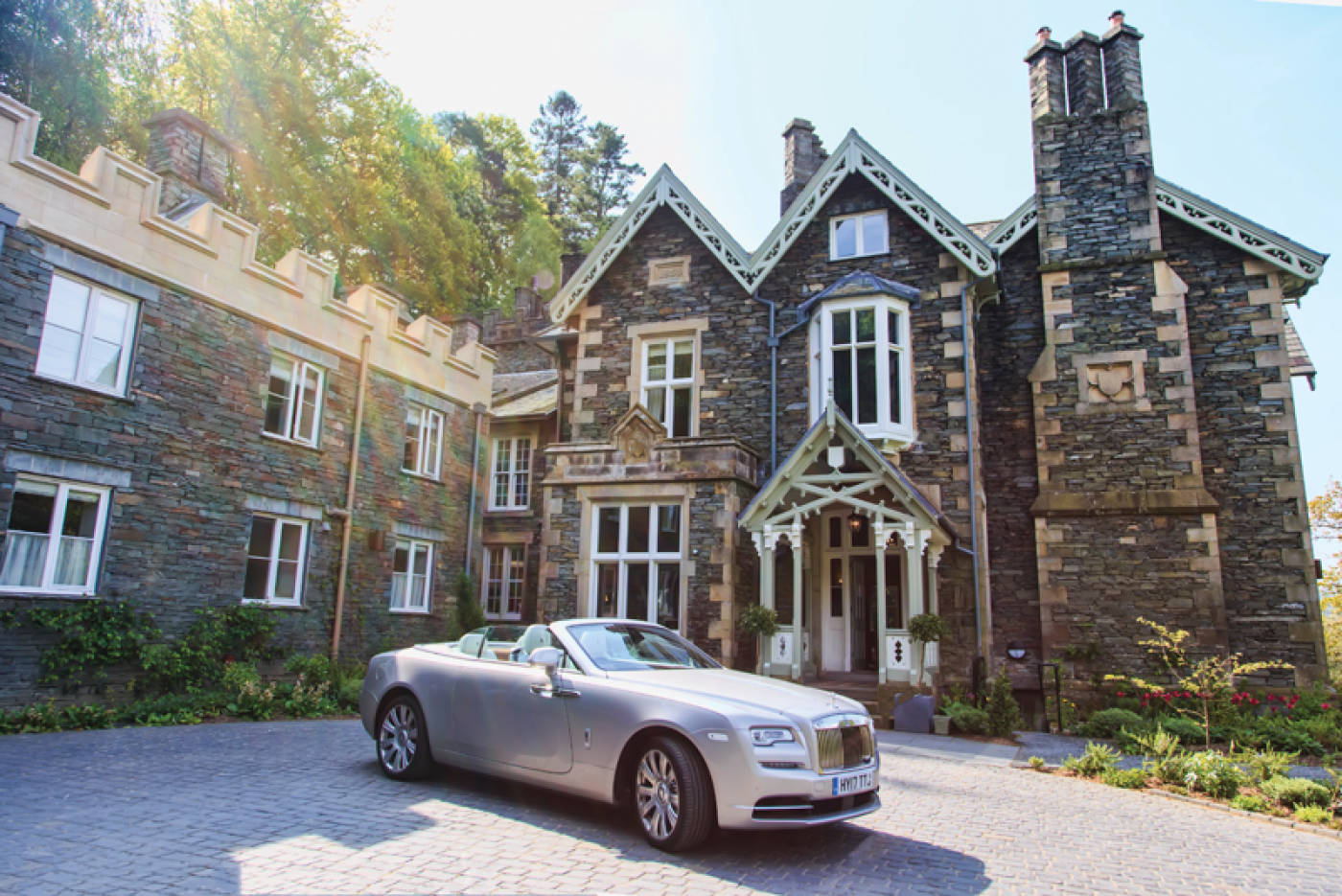
What does it take to earn a Michelin star?
A Michelin star is the most coveted award desired by chefs’. Although it’s presented to a restaurant, the credit for it goes to the Chef in charge of the kitchen. Speaking with Head Chef, Kevin Tickle, of Forest Side in Cumbria, our editor, Cindy-Lou Dale, learns what it takes to earn and run a Michelin star restaurant.
Cooking is an endless quest for perfection; it is at the same time never reached and always just out of grasp. There is nothing specific you need to accomplish to gain a Michelin star, except of course reach perfection, every day, every meal, every dish, every prep, rinse and repeat, every day.
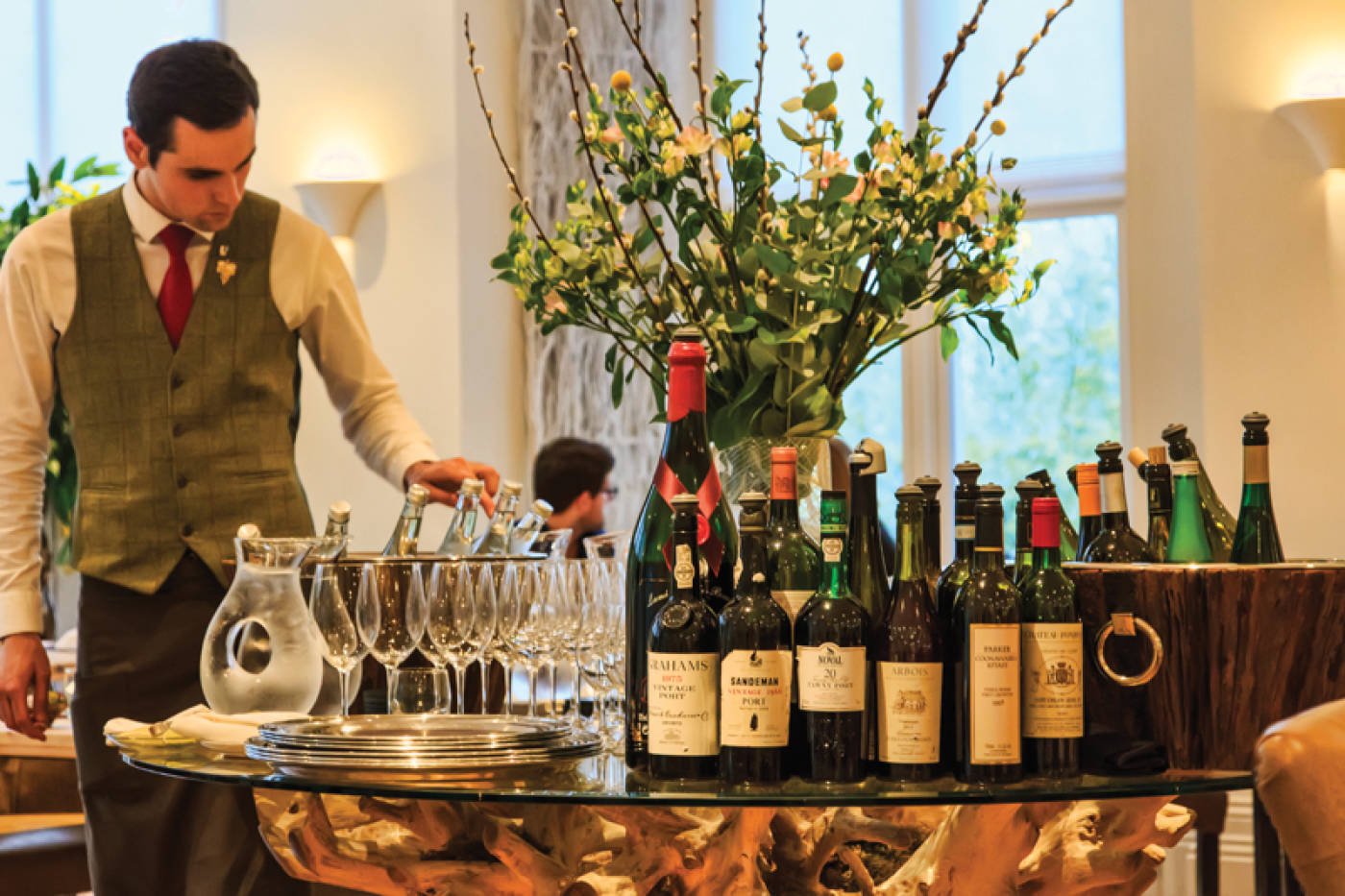
For some, a Michelin star could seem a harrowing and torturous path to an elusive reward. But if you have a life-devouring passion, for food and that special discipline required in the kitchen, it is a very concrete goal that can help give you direction, something tangible to seek and achieve. It could even help bring balance in your life in making decisions. Being a Michelin starred Chef is different to being a creative restauranteur or a disciplined business owner – you need to be all three.
Its years of graft and constantly seeking to improve, staying focused on the quality of the food – which is the magical word for Michelin – quality – everywhere, every time. Consistency. Being awarded a Michelin star is more than a recognition, it’s a social status, the ultimate reward. It really takes something special to separate the boys from the men, so to speak, but Michelin doesn’t provide guidance. Far from it. The only known criteria on which they judge a restaurant are quality of the produce, mastery of flavour and cooking techniques, the ‘personality’ of the cuisine, value for money and consistency between visits. Which means you need to stay passionate, stay focused, improve your strong points and get rid of the weak ones.
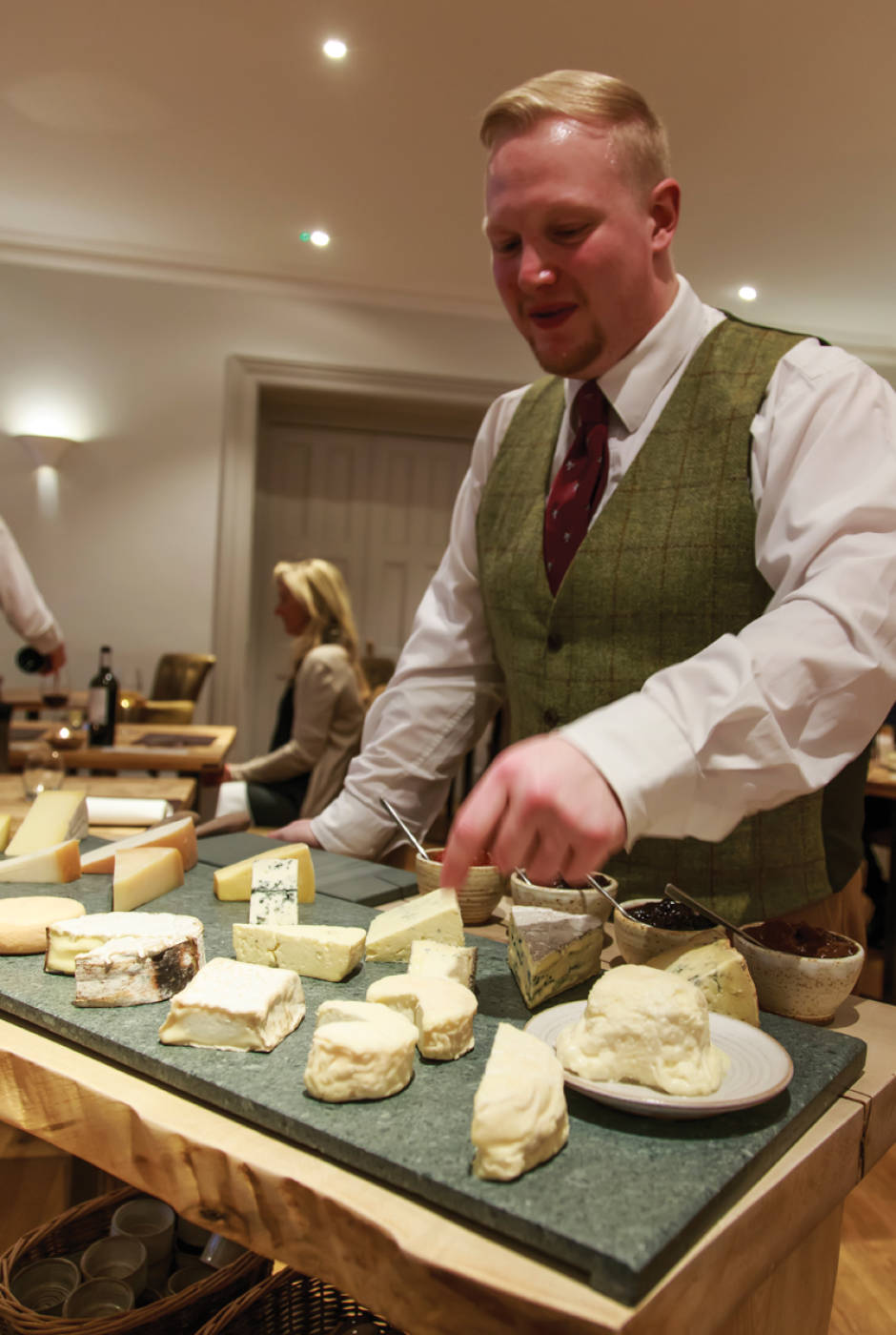
The non-kitchen details of the restaurant also need to be perfect. From minute details in the booking system to everything that goes into improving the venue, the garden, the parking. This is a main factor for Michelin recognition – constant reinvestment of whatever meagre profits you manage to rake in. Table settings receive similar consideration, both sensory and economic.
Precise attention to detail is key to creating a harmonious menu. The more harmony in the menu, the better the kitchen works. To achieve this harmony, repetition on the menu must be avoided, with no replication of cooking styles and sauces. No two red meats or two white meats. You cannot have two carbs. A main dish of pasta can’t be followed by a dessert made mostly of flour. This is important for modern cooking.
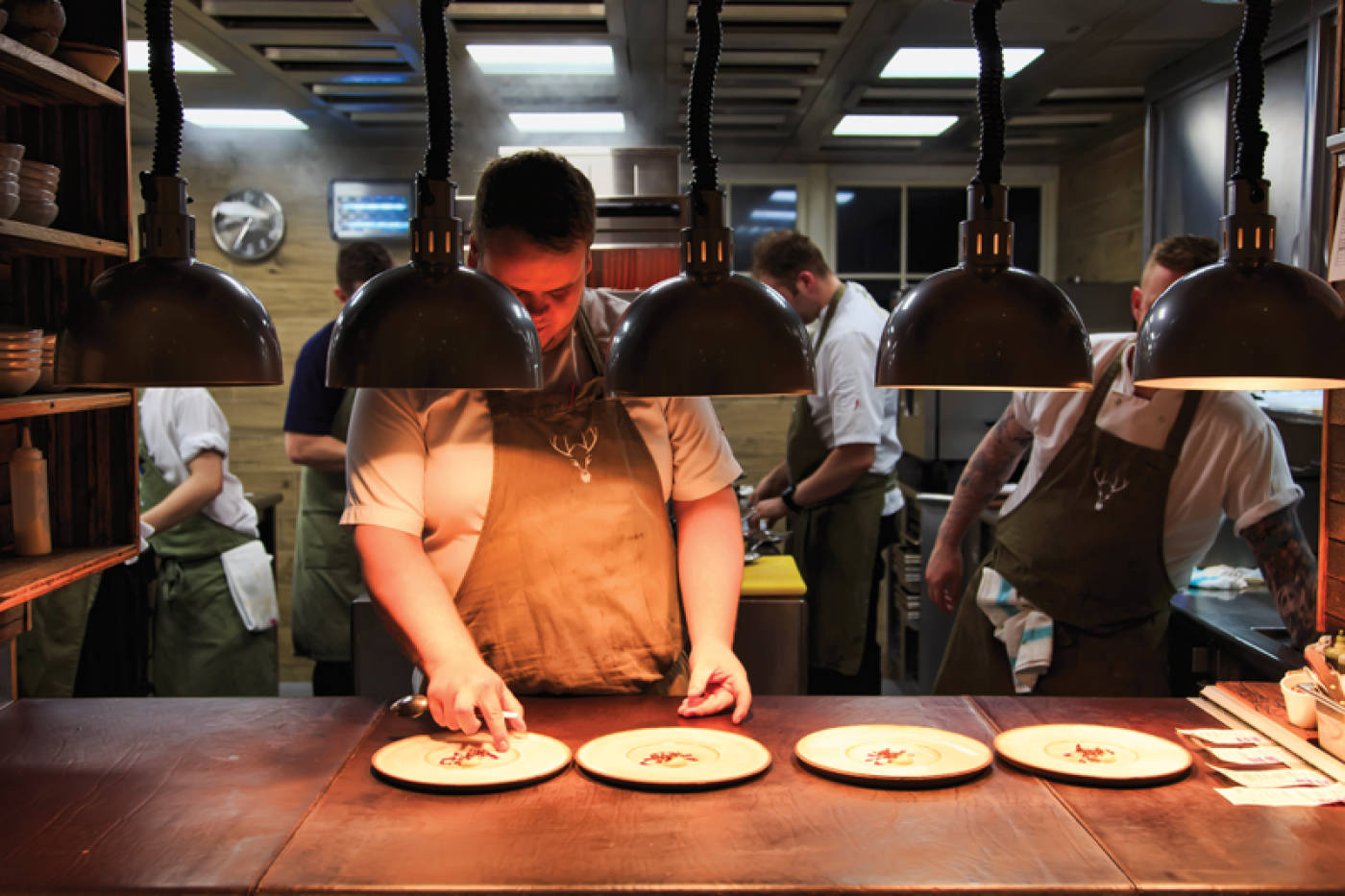
Head Chef Kevin Tickle: “We play on our strengths, which is our Lake District location, surrounded by organic farms and heritage livestock; and then we build relationships with the farmers and monitor the consistency, which is required by the Michelin inspectors. If you’re not confident of your source you can forget it.”.
Making a Michelin-starred restaurant affordable is no easy task. Receiving a star could be a mixed blessing. Certainly, it’s a rare and celebrated honour, however, a star begets expectations of quality and making it affordable is no easy task.
“There are 31 people in the kitchen team – four gardeners, one forager, 12 chefs and 14 waiters,” says Kevin. “This team is made up of a group of dedicated professionals; people who have a passion for food and are willing to put in the hours to make it work.’’
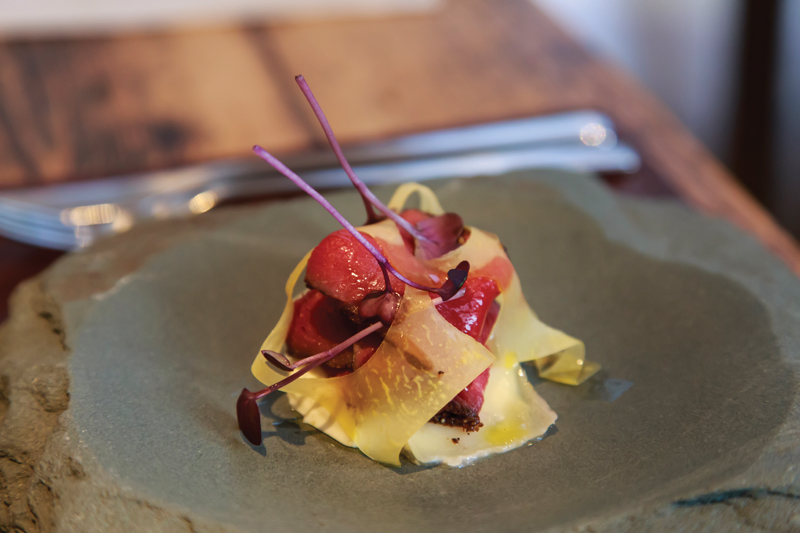
All the kitchen and serving staff have tasted the food and can fully explain each dish, as if they’ve prepared it themselves. Which is ably demonstrated when presented with a starter which, I am told, is ox tongue that’s been slow-cooked for 48-hour then lightly pan-fried, served with horseradish custard, burnt cabbage and pickled green walnuts. The main course is explained as lemon sole slow cooked in brown butter (when asked, a full description of brown butter was provided), muscle broth, charred radish, Morecambe Bay shrimps which are cooked in mace butter and mace oil and a sprinkling of marsh herbs.
Junior Sous Chef, Robert McGill, speaks of keeping food costs down and flavours high. “This is done by buying ingredients when they are in season. They’re less expensive and of higher quality when they’re in season; following the season is the most important cost saving when applied to the economics of running a restaurant.”
Creativity, discipline and optimum staff productivity is the licence to success for any business. The way Kevin Tickle manages his restaurant, particularly the costing of his menus, has led to an abundance of customers in his 46-seater restaurant. His strategy to employ full-time professional staff is commendable and results in a thriving team spirit, which rewards the efforts involved. Who knows where this may lead in the future.
A few of Chef’s favourite suppliers
Town Head is a National Trust working hill farm, comprising of 280 acres of fell and field in Grasmere; home to a flock of 500 Herdwick ewes and lambs. Their Herdwick sheep roam freely over the herb rich pastures and fells and exemplifies everything that’s right about the new generation of conscientious and professional small scale meat producer. “Herdwick sheep are ‘hefted’,” says farmer Will Benson. “This means they keep to a place on the fells without fences because they are taught a sense of belonging by their mothers in their first summer. This homing instinct stretches back more than a thousand years, and has never been broken.” Herdwick Hogget makes it from farm gate to chef’s plate in under 24-hours
“There’s no better way of connecting with people and understanding their culture than through their food,” says Aidan Monk of Lovingly Artisan Bakers, who’s approach to artisan bread-making is continental in style, with a wholesome northern vibe. He’s passionate about his baker’s world, finding inspiration at farmers’ markets, quality food retailers, even his own vegetable garden. “All that I produce is based on simple bread disciplines and excellent flour – organic heritage grains from Gilchesters Organics being my chosen source. The grains are lovingly grown and stone ground in Northumberland. This basic ingredient transforms my ability to produce beautiful bread.” From oven to chef’s table within hours.
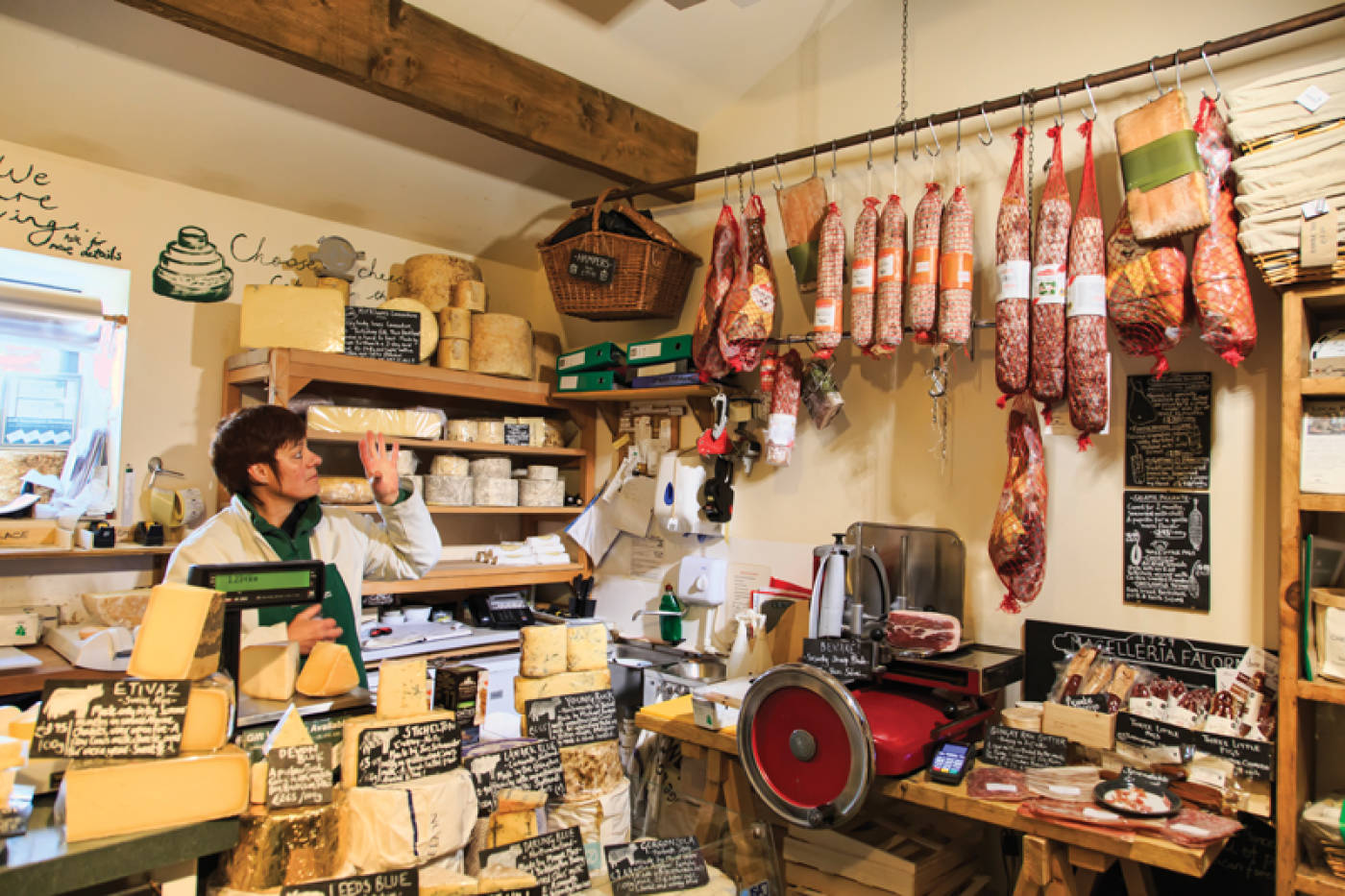
Andy and Kathy Swinscoe of Courtyard Dairy, independent cheesemaker championing small independent farmers, is a unique, specialist cheese-shop and cheese-maturer. Their destination shop in North Yorkshire matures some of the finest cheese to be found in Europe. Says Deb, their Chief Cheesemonger: “These specialist cheeses are still made by hand on the farm, with most farmers using their own unpasteurised milk from a single herd of animals. Many of these farmers have less than 70 cows – the smallest producer has just 7 goats!” Deb knows the back-story of each cheese they sell. She wrestled down three cheese wheels from a cheese mountain and presents me with The Forest Side’s current favourites, cutting slivers of each and presenting them to me balanced on her knifes blade. “Both the Moorland Monster and Moorland Tomme are from Whitby,” she says. “One is a pungent, paste-like cheese that bites back, and the other is rich and robust using Dairy Shorthorn milk, that’s aged for a year. St James is a rich, soft sheep’s milk cheese from Cartmel, with a creamy, rich sweetness.”
Charles Munro, Head Gardener for The Forest Side, explains the workings of the restaurant’s seasonal vegetables and fruit garden, the intricacies of micro-herb production as well as the day-to-day management of an ornamental, fragrant and woodlands garden. “We nurture mini vegetables, edible herbs, wild flowers, scented climbers, shrubs, fruit trees, traditional yew hedging and edible flowers – most of which are difficult to source. Our walled garden was prepared as the hotel was being renovated. We’re only into our second season now, but within the next year it will be as we want it.”
Following +20-years in the dramatic arts world, Andrew Arnold-Bennet traded his acting career in for one of distilling gin, providing The Forest Side with its most popular tipple. “Shed 1 Distillery produces 50-litres a week,” says Andrew, who runs his distillery from his garden shed and kitchen table. “My gins are big on taste as infused with local ingredients.” He hands me a rustic half-litre, apothecary-type bottle. “Fancy Frolic contains lime, lime flower petals, lime leaf, ginger, strawberry and of course juniper.” Another, Giggle in the Ginnel is imbued with angelica, star anise and elderberry. Cuckold Revenge permeates with star anise, cardamom, cinnamon and fresh orange and lemon zest. Tastes of ‘Christmas’ will be making their way into several bottles this year.
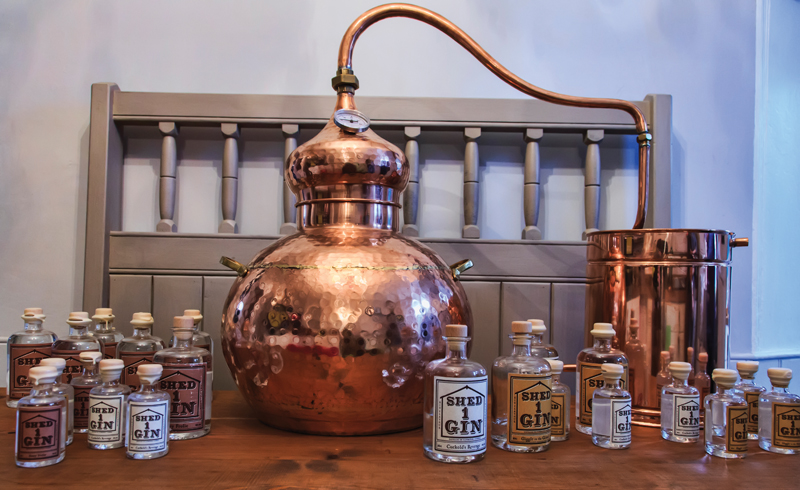
Forest Side is a fairy-tale Gothic 20-room mansion house hotel in Grasmere. The contemporary interiors, designed by James Mackie (former keyboard player for supergroup Madness), include handmade wallpaper, especially commissioned Herdwick wool carpets, handmade beds filled with Herdwick fleece and bespoke furnishings.
www.theforestside.com